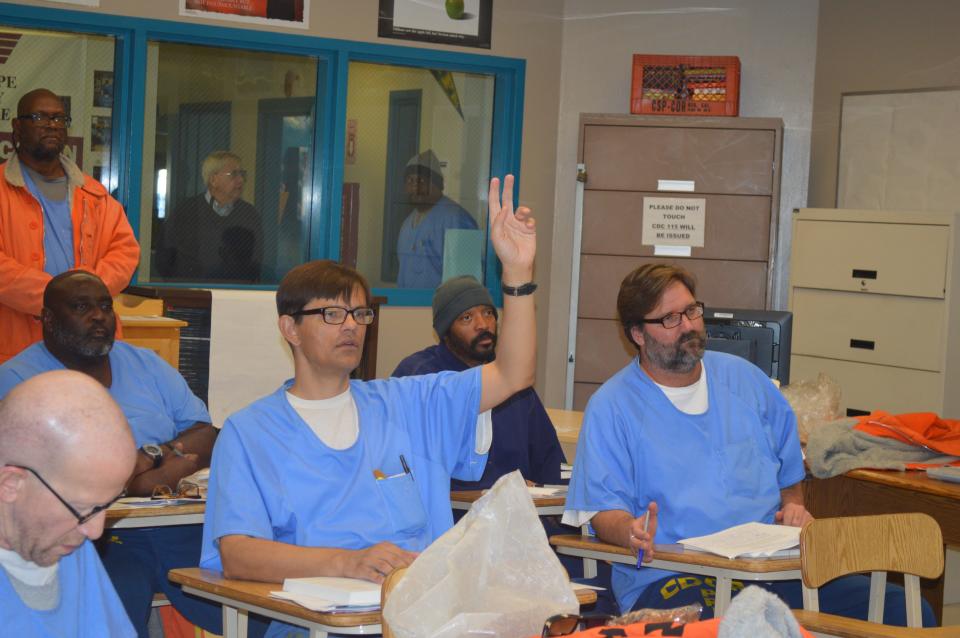Second chances: Why providing Pell Grants for prison inmates is a sound investment
This year gives about 463,000 of the more than 2 million Americans behind bars — and President-elect Joe Biden — a chance at a fresh start.
Buried deep in Congress’ latest COVID-19 relief deal is a provision that would allow the incarcerated the chance to better themselves, and their communities, through higher education.
For almost 30 years, prisoners could use federal aid to pay for a college education. By 1993-94, 23,000 of the 4 million Pell Grant recipients who received a portion of the $6 billion program to pay for higher education were in prison. By that time an estimated 772 in-prison programs were operational inside1,287 correctional facilities in the United States.
But the infamous 1994 Crime Bill, which Biden proudly authored, banned such aid for prisoners’ education. Biden was not alone; the majority of the Congressional Black Caucus voted in favor of doubling down on mass incarceration and mandatory minimum sentences through the Violent Crime Control and Law Enforcement Act of 1994.
In the years that followed, hundreds of in-prison college programs folded, which locked out one segment of the lower-income population from educational opportunities that could, among other things, prepare them for successful reentry into society.
Now, during our era of criminal justice reform, a $1.4 trillion omnibus bill supported by key congressional leaders including Sens. Lamar Alexander, R-Tenn., and Patty Murray, D-Wash., and Rep. Bobby Scott, D-Va., included a proposal to abolish the ban on incarcerated people qualifying for a Pell Grant.

Now that President Donald Trump has signed the bill into law, this package will give new life to the growing support for providing higher education to people behind bars.
Since 2016, the U.S Department of Education has approved 130 colleges and universities in 42 states and the District of Columbia to offer postsecondary degrees and certificates to incarcerated people through the Second-Chance Pell Experimental Sites Initiative.
According to a snapshot of the first three years of the program provided by the Vera Institute for Justice, at least 17,000 people have enrolled in Second Chance Pell colleges, and students have earned more than 4,500 certificates, postsecondary diplomas, associate’s degrees and bachelor’s degrees.
Education helps reduce recidivism
Research has shown the economic and fiscal benefits of postsecondary programs in prison, and a RAND Corporation study found that incarcerated people who participate in correctional education have a 43% lower likelihood of returning to prison and 13% higher odds of post-release employment than those who do not.
As we move into a new year, what can we generally expect in 2021 if things work out as planned?
Postsecondary institutions will gain access to a new set of Pell eligible students, and the timing could not be better. Given the decline in on-campus student enrollment and the rise of online learning platforms — both due in part to COVID-19 — lifting the ban will benefit both revenue-starved colleges and the education-eager incarcerated.
And, contrary to myths about giving a Pell Grant to prisoners, free-world college students will not lose out on any federal aid to someone in prison.
Companies like the American Prison Data Systems are poised to use online technology platforms to offer education to incarcerated students and prison personnel alike. Alumni and students of in-prison college programs — be it the Bard Prison Initiative, Historically Black Colleges and Universities offering degrees in prison, or the five community colleges in the Second Chance Pell Program in Virginia — will obtain an opportunity to champion the benefits of this program.
For President-elect Biden this legislative package gives him a second chance, too. He acknowledged during his run for the White House that the 1994 crime law he sponsored was heavy on punishment and light on redemption — locking prisoners out of Pell Grants once inside prison walls.
In 2020, Biden included in his “Plan for Education Beyond High School” a pledge to “restore formally incarcerated individuals’ eligibility for Pell.” So this legislative package gets him one step closer to fulfilling that goal.
To further expand eligibility, Congress will need to amend federal law that still bans most prisoners from receiving Pell Grants. Biden also can (and should) extend the Second Chance Pell Program experiment, initiated by President Barack Obama and extended by Trump.
Biden’s nominee for education secretary, Miguel Cardona, will be responsible for oversight of the Second Chance program, which has received support from Secretaries Arne Duncan, John King and Betsy DeVos, as well as advocates on the right and left, in faith and business communities and in some states.
Proposal has bipartisan support
At a point in American history when partisanship and distrust of each other’s motives have clouded our views about Congress, this bold bipartisan decision to lift the Pell Grant eligibility ban is a crucial step forward in rebuilding political trust and preparing the 95% of people who will leave prison one day to reenter society.
For us all, including prisoners, the New Year is a time of reflection and redemption. Now it is up to us to see that the incarcerated can make good on their resolutions when they return to society.
Gerard Robinson is a Fellow of Practice at the Institute for Advanced Studies in Culture at the University of Virginia, and co-editor of "Education for Liberation: The Politics of Promise and Reform Inside and Beyond America’s Prisons". He also was the Virginia Secretary of Education.
You can read diverse opinions from our Board of Contributors and other writers on the Opinion front page, on Twitter @usatodayopinion and in our daily Opinion newsletter. To respond to a column, submit a comment to letters@usatoday.com.
This article originally appeared on USA TODAY: Why allowing prison inmates to receive Pell Grants is good for America

